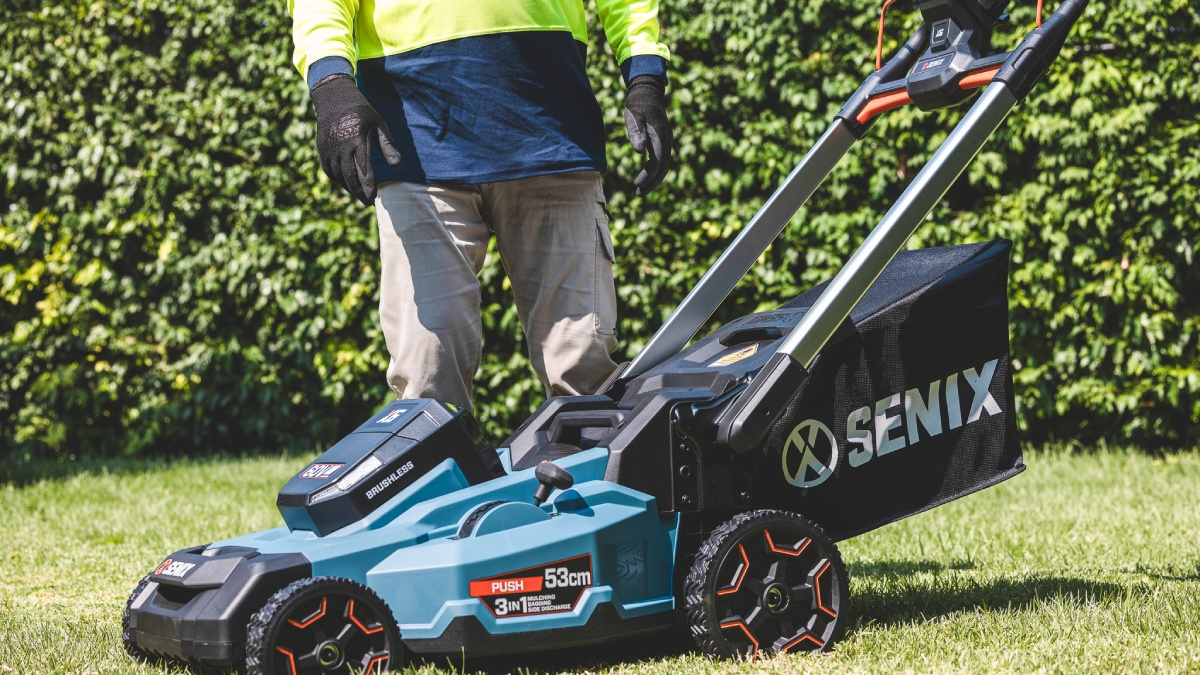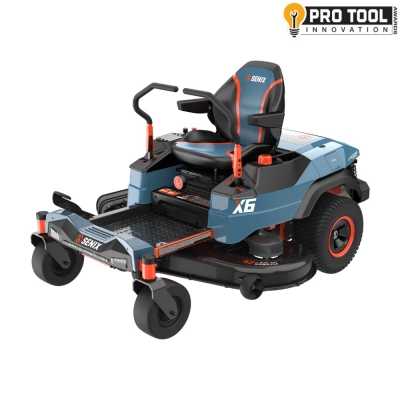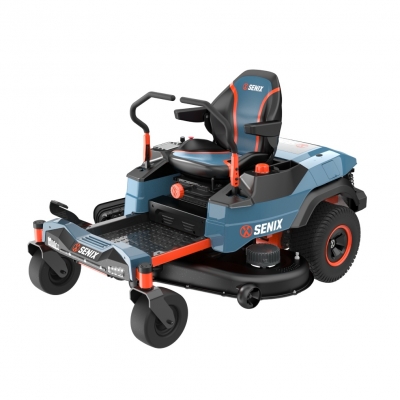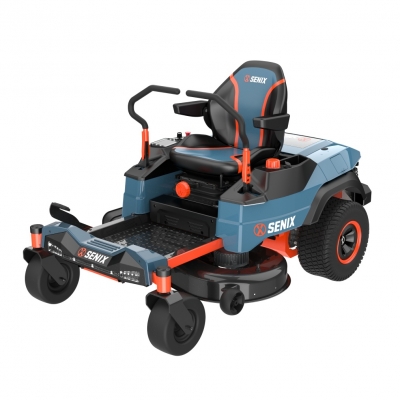Lawn Mower Troubleshooting Guide: Fixing Common Problems at Home
Nothing spoils a weekend like a mower that won't start or cuts out halfway through the lawn. Whether you've got a petrol, battery-powered, or self-propelled mower, issues are bound to crop up over time. The good news? Many problems are simple to fix yourself with a few checks and adjustments.
This guide walks you through the most common mower issues—won't start, blades stuck, loss of power, and more—and gives you practical, step-by-step troubleshooting tips. Whether your mower is brand-new or has been working hard for years, these solutions will help you get back to mowing without wasting time or money.

1. Mower Won't Start
This is by far the most common frustration, whether it's a brand-new mower or one you've used for years.
For Battery Mowers:
Check battery seating – Remove and reinsert the battery until it clicks into place. Loose connections often mimic a dead mower.
Confirm charge status – Lights on the panel or charger can show if the pack is truly full. A faulty charger might “say” it's full when it's not.
Try another tool – If your mower shares batteries with other tools, slot it into a blower or trimmer. If the tool works, the mower is at fault.
Look for safety locks – Many battery mowers have a safety key or switch. Double-check it hasn't been removed or bumped out of place.
For Petrol Mowers:
Check the fuel – Old fuel (left more than 4 weeks) can gum up the carburettor. Drain and replace with fresh petrol.
Inspect the spark plug – Remove and check for corrosion, carbon build-up, or damage. Clean or replace if necessary.
Oil check – Low or contaminated oil can trigger safety shut-offs. Make sure your dipstick shows enough oil.
Air filter – A clogged filter can stop the engine from breathing. Clean or replace if dirty.
Pro tip: If your mower is brand new and won't start, don't keep yanking the cord or forcing it. Stop and check everything methodically—it could be a simple oversight like transport oil still inside, a disconnected spark lead, or the battery not fully charged.
2. Starter Cord Won't Pull
If you can't even pull the cord on a petrol mower:
Check the blade – Grass or debris can jam the blade against the housing. Disconnect the spark plug first, then tip the mower carefully and clear any blockages.
Engine lock-up – If the mower has been tilted incorrectly (e.g., on its side with carburettor facing down), oil can flood the cylinder. Remove the spark plug, tilt mower the correct way, and pull cord gently to clear oil.
Blade bolt too tight – Some new mowers ship with bolts overtightened, making removal or blade rotation difficult. Use a breaker bar or penetrating oil to loosen.
3. Mower Starts but Won't Stay On
Your mower coughs into life but cuts out straight away.
For battery models:
Battery may not be delivering enough current despite showing full voltage. Swap in a spare if possible.
Overheating protection may cut power—let the battery cool before retrying.
For petrol models:
Blocked carburettor jets—clean with carb cleaner spray.
Dirty fuel line or clogged fuel filter—inspect and replace if necessary.
Low oil sensor tripping—top up oil.
4. Loss of Power Mid-Mow
The mower runs, but the power drops suddenly.
Check the blade – Dull, bent, or clogged blades force the motor/engine to work harder. Sharpen or replace.
Grass build-up – Wet or long grass can stick under the deck. Always clear clumps after mowing.
Battery fade – Lithium-ion packs degrade with time. If runtime has halved compared to new, consider a replacement pack.
Fuel issues – For petrol, stale fuel or water in the tank can starve the engine. Drain and refill with fresh unleaded.
5. Mower Blades Won't Engage or Are Hard to Remove
Blades won't spin:
Check if the blade clutch (on some self-propelled or ride-on models) is engaged.
For electric models, safety switches may need to be fully depressed.
Can't remove blade:
Bolt seized? Use a penetrating oil spray, leave for 10–15 minutes, then use a breaker bar with the correct socket size.
Tip safely: Wedge a block of wood between blade and deck to stop the blade turning while loosening the bolt.
If new: Manufacturers sometimes overtighten bolts for shipping—don't be afraid to use leverage.
6. Self-Propelled Mowers: Drive Issues
If your self-propelled mower is difficult to push:
Check drive belt – It may have slipped or worn out. Refit or replace as needed.
Wheel gears – Grass can clog the drive wheels. Clean thoroughly.
Cable adjustment – Over time, drive cables can loosen, reducing drive engagement. Tighten to spec.
7. Odd Noises, Vibrations, or Smoke
Loud knocking or rattling – Often blade imbalance. Remove blade, sharpen evenly, and refit.
White smoke – Oil has entered combustion chamber, usually from tipping mower incorrectly. Let it burn off after correcting tilt.
Blue smoke – Oil burning due to worn piston rings or overfilled oil—seek servicing.
Excess vibration – Bent blade or loose bolts. Replace blade if damage is visible.
8. Warranty & When to Call for Service
If you've checked the basics and your mower still won't cooperate, it may be a manufacturing fault. Many SENIX mowers come with warranties covering major defects, such as:
Motors failing within the first few uses
Faulty switches or electronics
Cracked handles or premature wear of protective parts
Always keep your receipt and model number handy. Photos or videos of the issue help speed up warranty claims.
9. Preventive Maintenance Tips
Regular care prevents most mower issues:
After each mow: Clear grass clippings from under the deck and brush dirt off the wheels.
Weekly: Check oil (petrol) or battery contacts (cordless).
Monthly: Sharpen blades, clean filters, and inspect cables.
Seasonally: Replace spark plugs (petrol), test batteries, and store indoors over winter.

FAQs on Lawn Mower Troubleshooting
Q: My mower is only a few months old and already won't start—what now?
A: If you've followed the troubleshooting steps (fuel, spark, battery seating, etc.) and still no luck, it's likely a warranty issue. Contact the retailer or manufacturer.
Q: Can I use car fuel in my mower?
A: Yes, but always use fresh unleaded. Avoid ethanol-heavy blends if your manual warns against them.
Q: The handle grip cracked after one use—should I worry?
A: It's cosmetic, but still covered under warranty if it happened immediately. Contact support for replacement parts.
Q: Why won't my mower cut evenly?
A: Blunt or damaged blades are the main cause. Sharpen or replace them, and check deck height settings.
Q: My mower shows power lights but won't crank—what's wrong?
A: Likely a motor fault or internal wiring issue. If under warranty, don't attempt to strip it—send it in.
Conclusion
Mowers can be temperamental, but the majority of problems have straightforward fixes. From clearing grass blockages to checking batteries, spark plugs, or blade bolts, most issues can be solved at home with minimal tools. The key is working methodically—don't assume the worst until you've ruled out the basics.
If your mower is under warranty, use it. Document the issue, contact customer service, and push for resolution rather than paying for a new machine. With the right care and troubleshooting know-how, your mower should deliver years of reliable service, keeping your lawn neat and your weekends stress-free.



 (5.0)
(5.0)
